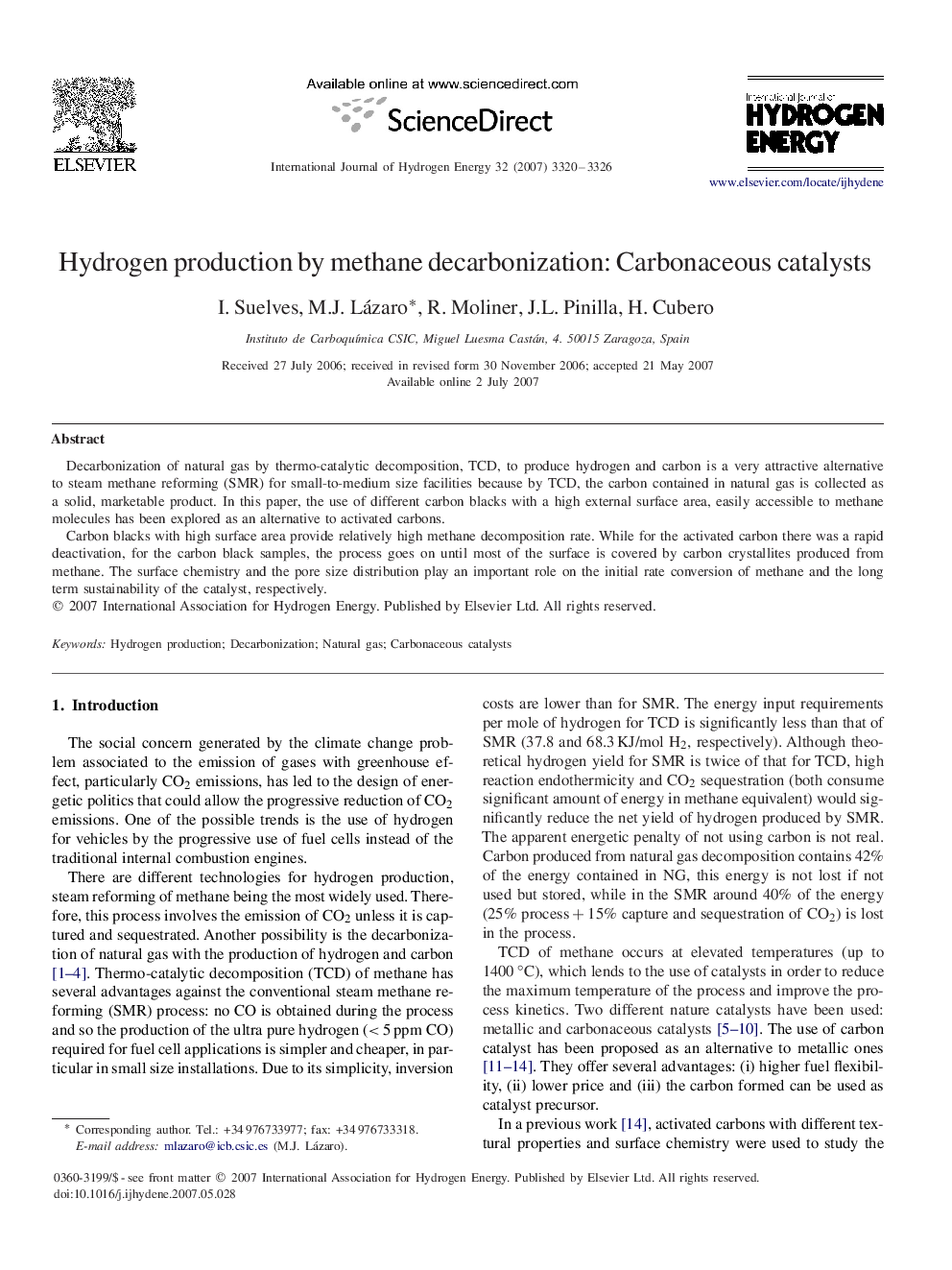| Article ID | Journal | Published Year | Pages | File Type |
|---|---|---|---|---|
| 1279673 | International Journal of Hydrogen Energy | 2007 | 7 Pages |
Decarbonization of natural gas by thermo-catalytic decomposition, TCD, to produce hydrogen and carbon is a very attractive alternative to steam methane reforming (SMR) for small-to-medium size facilities because by TCD, the carbon contained in natural gas is collected as a solid, marketable product. In this paper, the use of different carbon blacks with a high external surface area, easily accessible to methane molecules has been explored as an alternative to activated carbons.Carbon blacks with high surface area provide relatively high methane decomposition rate. While for the activated carbon there was a rapid deactivation, for the carbon black samples, the process goes on until most of the surface is covered by carbon crystallites produced from methane. The surface chemistry and the pore size distribution play an important role on the initial rate conversion of methane and the long term sustainability of the catalyst, respectively.
